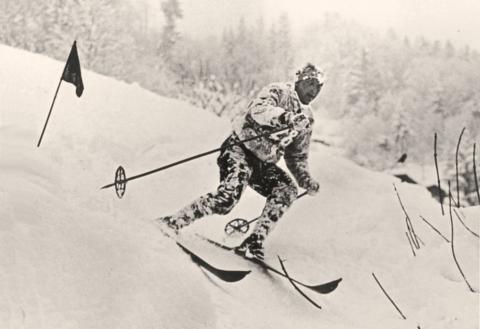
1921 was an important year in the history of ski racing. In 1920 the British ski racing pioneer Arnold Lunn, then age 32, became chairman of the Federal Council of British Ski Clubs and thus responsible for British ski racing. In January, 1921, at Mürren, Switzerland, he organized the first British Championships to be based on a “straight” or downhill race, with a slalom won on style points, not speed. Over the course of two days, slalom competitors were required to score points with telemark turns, stem turns, jump turns and stop-christies, in soft and difficult snow conditions. Winner of both the downhill and the combined trophy was 19-year-old Leonard Dobbs, who, as the son of Sir Henry Lunn’s local agent, had grown up skiing in Switzerland.
Lunn considered the judged slalom “a failure.” “The object of a turn is to get round a given obstacle losing as little speed as possible, therefore, a fast ugly turn is better than a slow pretty turn,” Lunn wrote in the British Ski Year Book. And so, over the course of 1921, he changed the rules. On January 1, 1922, on the grounds of Mürren’s Palace Hotel, Lunn organized the first-ever slalom race in which speed through gates was the sole criterion for victory. The winner: Johnson A. Joannides, a Great War veteran then resident in Mürren.
This was before the International Ski Federation (FIS) was founded (that came in 1924). FIS published its own rules for timed slalom in 1927 and the first race under those rules took place at Dartmouth College in 1928 (winner: Dartmouth freshman Bob Baumrucker). It would be 1931 before the FIS included a timed slalom in the first Alpine World Championships. –Patrick Thorne
